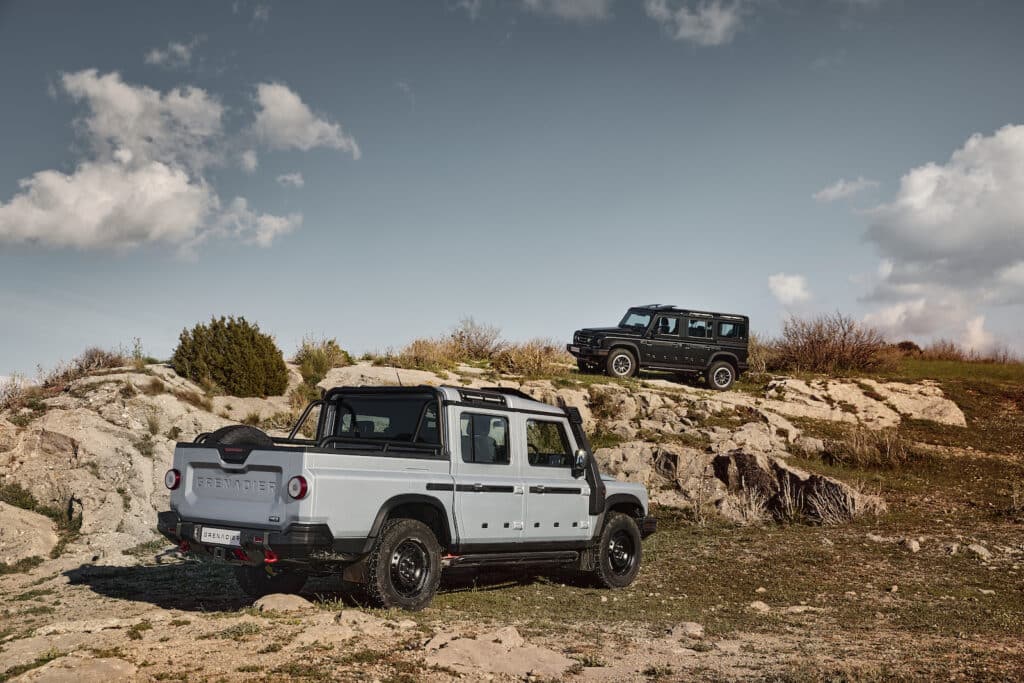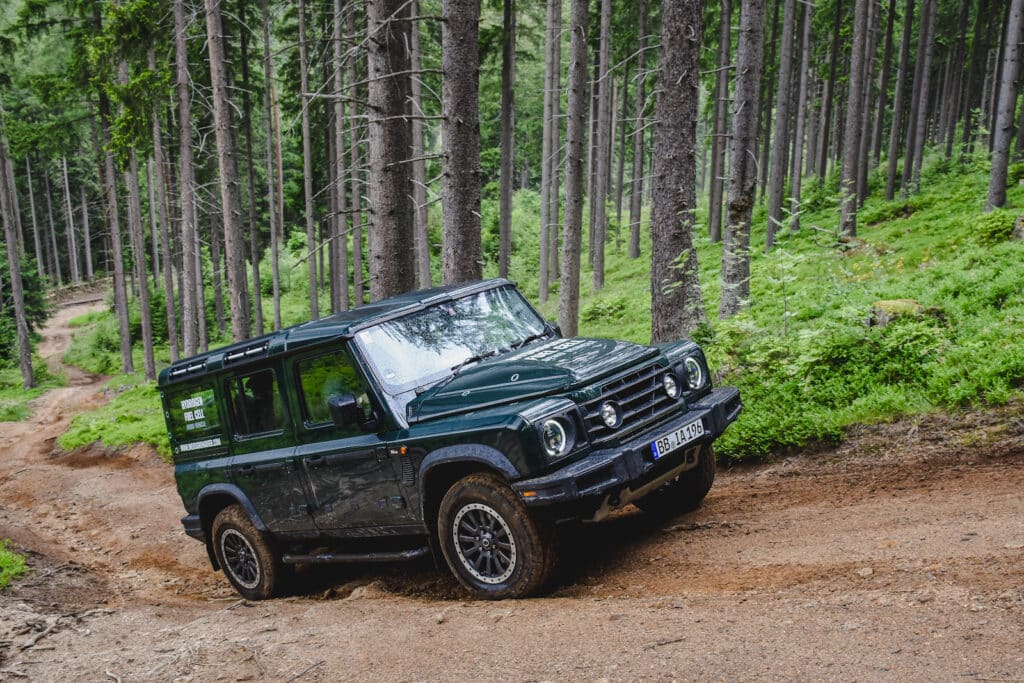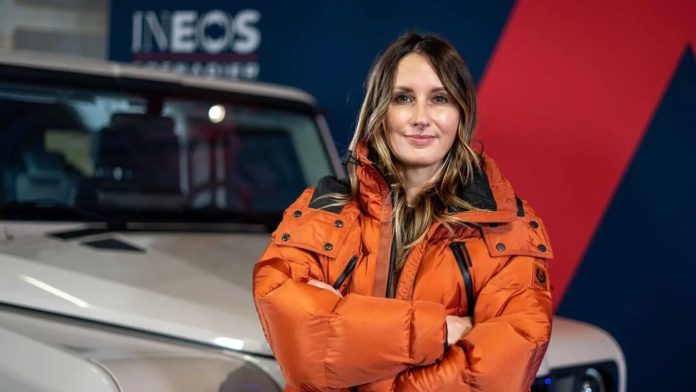Odds are you’ve never heard of Ineos Automotive — at least not until recently. But CEO Lynn Calder is determined to take on some big names, like Jeep and Land Rover, with her little startup.
Funded by the Ineos Group, the world’s third-largest chemical company, the UK-based startup has only just launched its first vehicle, the rough and rugged Ineos Grenadier SUV. But it’s already pulled the wraps off a second model, the Quartermaster pickup, that should reach showrooms early in 2024. And even more products, including an off-road EV, will follow in the coming years.
TheDetroitBureau.com caught up with Calder, who joined the automotive newcomer this past year and asked her about plans for the U.S. launch of the Grenadier, the products now in the pipeline, and how critical quality is for an unknown entry to the hotly competitive automotive market.
TheDetroitBureau: Ineos is a complete newcomer. I doubt many people even know its name. So your startup has to be slow. How many orders have you taken so far for Grenadier?
Calder: We’ve got 2,208 and we’ve got 5,000 manufactured.
TDB: What’s your timetable for getting the Grenadier into the U.S. market?
Calder: We’ve opened up the order books and production starts in September. And we’re working really, really hard to get cars to the U.S. this year. We are absolutely breaking our backs to get Grenadier to the U.S. this year. But there are challenges we won’t compromise on. We won’t send it if it’s not right.

TDB: You raise an important point. For an unknown auto startup, getting quality right has to be critical.
Calder: (In some of the earliest vehicles Ineos produced, a small quality problem showed up) It was a tiny part, almost worth nothing. But sticking door knobs, people are going to notice. We can’t be putting cars out like that. I made the decision in December, January time (to delay launch). We’re not sending them out. We’ve got to fix it. But now, the pipeline is starting to move quickly. And we appreciate everyone’s patience.
TDB: Back to timing, when do you plan to get the Quartermaster pickup into showrooms?
Calder: We’re in the tryout stage right now, so we’re getting into next year, early next year.
TDB: Any thought of building them in the U.S.?
Calder: It could be made in the U.S. but won’t be. It will be made in our factory in Hambach (the former Smart car plant), on the French border with Germany.
Expanding the portfolio
TDB: You’ve already talked about wanting more products in the Ineos line-up. How many different models would you eventually like to have?

Calder: Probably about four. The Grenadier (SUV) and Quartermaster (pickup) are really one family. So, another three beyond those models.
TDB: What type of vehicles would those be?
Calder: We’re still working on the finer details. But one thing I can tell you is that the off-road DNA will always be us, you know. We’re not going to build a sports car or a family (sedan). Off-road is our core.
TDB: Might a full-size pickup be in the planning stage? And, if so, what would the timeframe be?
Calder: Yeah, and our planning director strongly believes we need that to be competitive. So, it’s on the long roster of things for us to look at. I’m not going to give a timeframe for that. We’ve got limited resources.
Going electric
TDB: You’ve already announced plans for your first EV. How far along is it?
Calder: We’re quite well into the development of the engineering of that vehicle. But we’re still working on it. (Ed: Ineos insiders say the EV’s design still has to be formalized.) It’s coming in 2026, but we’re two years into it. It’s going to be a skateboard design. It won’t be an electric version of the Grenadier. That would just be too difficult. And, considering the use cases, like towing, I don’t think it would lend itself well to going electric.

TDB: What are you looking at in terms of range?
Calder: Four hundred kilometers. (Ed: or 250 miles using the looser global WLTP test cycle. Typically, EPA numbers about 20% less.)
TDB: How many of the other products you’ll bring to market by 2030 will be EVs?
Calder: I think it’s a great question but I’m not sure I can answer that because we’re constantly balancing our fleet. We’re committed to doing everything we can to decarbonize. However, we also have a global market and not every country has the same approach (to electrification). We need to find the right balance of finding everything we can do for the zero-emission transition. But we will still need to provide combustion engine vehicles in countries that continue to need them – not just want, but need them.
TDB: So, how do you do both?
Calder: I think we’ll be looking to maximize our optionality with future models without getting too complex. We’ll have a pure EV by 2026. But future models might have the option of going both internal combustion and electric. And maybe hydrogen. I’m not going to pick a horse now. I think that would be the wrong thing to do. We’re now in 30 countries and will be in 40 by the middle of next year. That means we have to deal with a lot of different regulatory environments and different requirements from consumers.
TDB: If you had to say who your competition is, who would that be?
Calder: We’ve (had) lots of conversations about this and struggle with who to benchmark ourselves against. Not that we’re special. It’s just that from the price standpoint and our off-road capabilities, I don’t think there’s a direct benchmark. I’m not saying that I don’t say the Land Rover Defender as a competitor. It is absolutely our competitor. But it’s a fairly different vehicle. A big part of our vehicle was to make it as mechanical as possible so you can fix it if you’re somewhere in the middle of the (Australian) Outback, or the middle of the U.S. or Scotland, where I’m from. You don’t need a diagnostics machine. You can get the parts and you can fix it.

